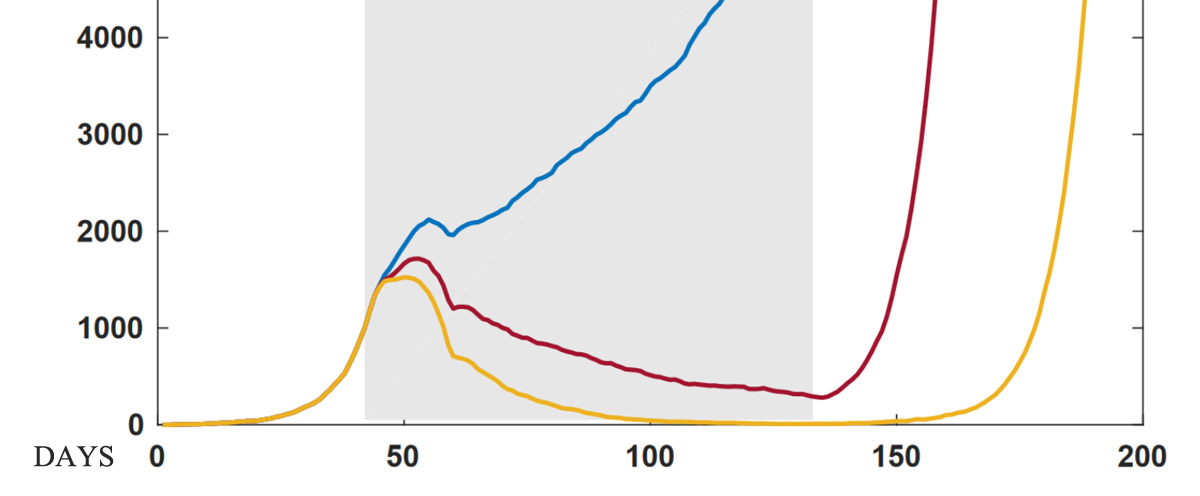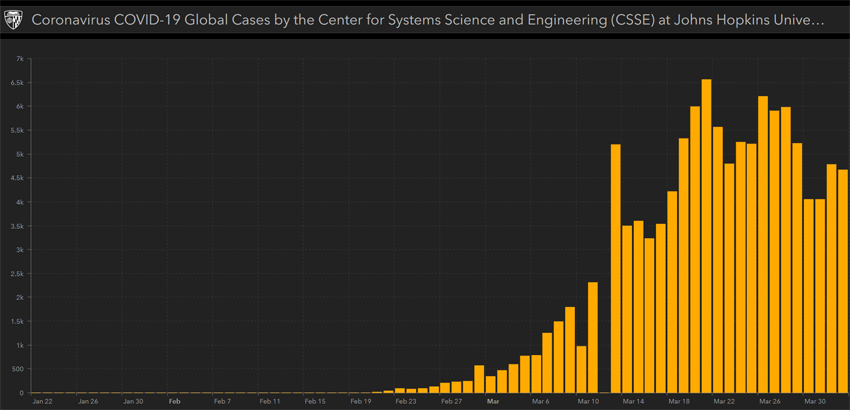
Having stampeded across daily life in Australia for the past month, occupying 95 per cent of news, many people and businesses are turning to the question of when the COVID-19 restrictions will be relaxed and the economy restarted.
Australia seems to be trending a steady downward number of new cases each day, indicating the ratcheted restrictions and ‘social distancing’ (SD) are having an effect. Figures thus far suggest about 90 per cent of people are being compliant with advice to stay home as much as possible.
PM Scott Morrison has said pandemic measures look like being in force for at least six months, possibly longer. When questioned specifically about business closures, he stressed he has not directly said closures would be for this long.
But new data out of Sydney University warns relaxing any current measures cannot happen before at least late July.
The University’s model, published last week and recently updated, is designed to help demonstrate how different actions might affect the spread of the virus. It incorporates 24 million individual software agents to mirror the country’s population. The effects of SD were achieved by removing contact between working groups, and reducing non-household contact to 10 per cent of the standard rate.
The model was created by the Centre for Complex Systems in conjunction with the (Marie Bashir) Institute for Infectious Diseases & Biosecurity, within Sydney University.
In this simulation¹, the SD begins on 24 March. Pandemic protocols are believed to have been set to cut in at 1,000 cases, reached on 21 March, triggering pub and public spaces closure, which was announced on 22 March.
The grey area represents a 90-day period of restrictions enforcement, initially flagged for the measures. The coloured lines represent compliance to SD measures of 70% (blue), 80% (red) and 90% (orange).

This graph shows that if only 70 per cent of the population complies with isolation and SD, the number of cases will keep rising with minimal change.
At 80 per cent the case numbers are reduced to perhaps 200, but quickly rise again after the restrictions end.
Only with 90 per cent compliance do case numbers get close to zero.
However, should we end restrictions after 90 days, and SD is relaxed, the model predicts we will quickly hit 1,000 cases again – probably within six months of the first round starting. This will render all prior work done reducing the spread effectively pointless.
The model shows that if Australians maintain 90 per cent compliance – which is by no means guaranteed – the number of active cases will appear to be zero by around 10 weeks into the shutdown period. At this point many industries and the public will likely be pressuring government to relax the measures.
But Professor Mikhail Prokopenko, principal of the Sydney University study, notes that an infected person can be contagious and transferring the virus for up to 17 days. Each person they infect will also be contagious for 17 days, and so on.
Even more alarmingly, the research found and based the model on 31 per cent of adults infected not showing symptoms. These ‘asymptomatic’ cases are nonetheless infectious for a period, during which they can unknowingly infect others.
What’s more, the Sydney University report concurs with findings from the Imperial College that say a second wave of infections will likely be worse than the first. If we reopen business too early, we will get the second wave; staying closed, we probably don’t.
The world-wide death rate, according to John Hopkins University² this week, based on resolved cases (that have either recovered or passed away) the death rate stands at 25.09 per cent. The mortality rate for overall infections, accounting for the estimated seven-day gestation, stands at 8.97 per cent.
Italy – in the global spotlight as taking the highest toll to date – is suspected to be understating its deaths attributed to the virus, yet still shows a death rate in resolved cases of 33 per cent.
The modelling by Professor Prokopenko is intended for academic and educational purposes, while governments in Australia employ their own methodology to guide their response. There have been calls by the Australian Academy of Science to release government modelling, with PM Morrison citing plans to release information about them next week.
All models portray one outcome, given certain parameters. None are going to perfectly predict what actually takes place over coming months, but they represent the best insight we can get.
Another avenue for improvement in circumstances is the rollout of robust and rapid testing, hopefully catching even most of the asymptomatic people. It’s suggested faster and more comprehensive testing could be in place by the time the 90-day initial period ends, but this would require a major response in and of itself.
The ABC’s Dr Norman Swan says the country and economy won’t truly get back to normal until there’s a vaccine, which experts predict is still 12-18 months away even if all goes well in its development. Overseas travel is not likely to resume before this time.
*
Social Distancing (SD) measures dictate all Australians should remain in their homes, except for:
- Shopping for food and essential items
- Working or studying (if this cannot be done at home)
- Providing health services or care for another person
- Exercising – to be done with no more than 1 other person
¹ All models of this nature represent one possible outcome given many variables. No model is likely to exactly predict what will actually play out.
² John Hopkins University is arguably the world’s leading institution for medical research and teaching, and seen as an expert resource on COVID-19 data.
